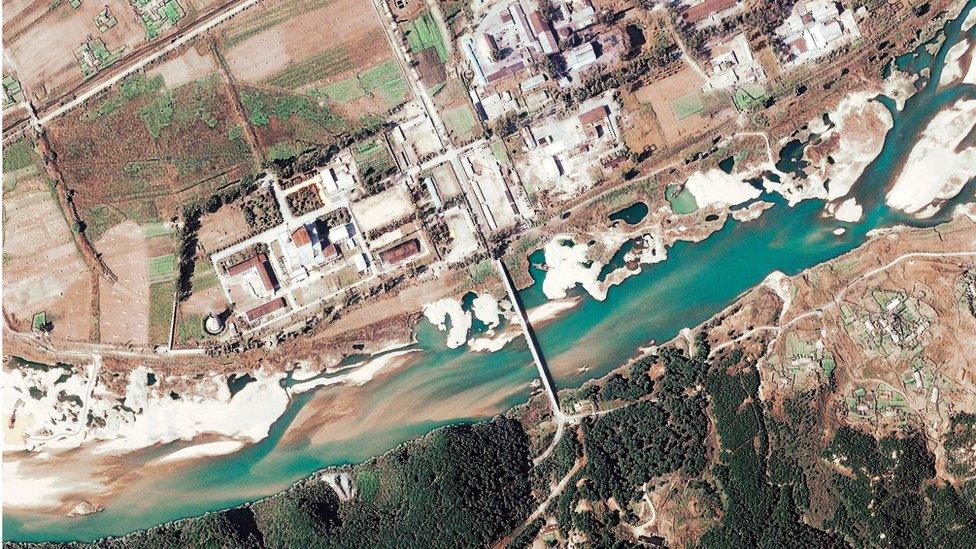North Korea conducts new intercontinental missile test
- Published

North Korea said it conducted its first ICBM test in early July - the latest took place late at night
North Korea has conducted a new intercontinental ballistic missile test, South Korea and the Pentagon say.
The missile reached an altitude of about 3,000km (1,865 miles) and landed in the sea off Japan, the Japanese national broadcaster NHK said.
It comes three weeks after North Korea's first ICBM test.
In response, the US and South Korean military conducted a live-firing exercise using surface-to-surface missiles, a US defence official said.
The missiles were fired into the "territorial waters of South Korea along the east coast," a US military statement said.
The latest North Korean missile flew higher, further and for longer than the one in early July. Its launch has been condemned by a number of countries.
The test - the 14th carried out by North Korea in 2017 - is the latest to be conducted in defiance of a UN ban.
US President Donald Trump called it "only the latest reckless and dangerous action by the North Korean regime".
Jeffrey Lewis, a nuclear nonproliferation expert at the Middlebury Institute of International Studies in California, said that initial indications showed the latest missile had a range of about 10,000km, external - far enough to strike the west coast of the United States and beyond.
The Washington Post reported, external that Denver and possibly Chicago could now be in North Korea's range.
The latest missile was launched at 23:41 (15:41 GMT) from an arms plant in Jagang province in the north of the country, the Pentagon said.
It is unusual for North Korea to launch a missile at night - the significance is as yet unclear. No missiles had been fired from Jagang province before, external, indicating a previously-unknown launch site is operational.
Japanese Chief Cabinet Secretary Yoshihide Suga said the missile flew for about 45 minutes - some six minutes longer than the ICBM tested in early July.
NHK said it reached an altitude of about 3,000km - about 200km higher than the previous ICBM. It landed about 1,000km from the launch site, the Pentagon said.
ICBMs can reach altitudes well outside the earth's atmosphere. Using sharp trajectories with high altitudes allows North Korea to avoid firing over neighbouring countries.

In the latest reaction:
South Korea's President Moon Jae-in convened an emergency security meeting for the middle of the night
Japanese Prime Minister Shinzo Abe did the same, saying: "The threat to Japan's security has become grave and real"
Pentagon spokesman Capt Jeff Davis said: "We remain prepared to defend ourselves and our allies from any attack or provocation"
Despite ongoing tests, experts believe Pyongyang does not yet have the capability to miniaturise a nuclear warhead, fit it on to a long-range missile, and ensure it is protected until delivery to the target.
They say many of North Korea's missiles cannot accurately hit targets.
Others, however, believe that, external at the rate it is going, Pyongyang may overcome these challenges and develop a nuclear weapon within five to 10 years that could strike the US.
Why does North Korea want nukes?
The US has installed a missile defence system in South Korea to combat the threat from the North, but the Terminal High-Altitude Area Defense system (Thaad) has angered many in the region, especially China.
South Korea's president said he wanted to hold talks with the US on deploying more of the Thaad units in the wake of the latest tests, Yonhap reported.
- Published4 July 2017

- Published4 July 2017
- Published10 August 2017
- Published10 August 2017
